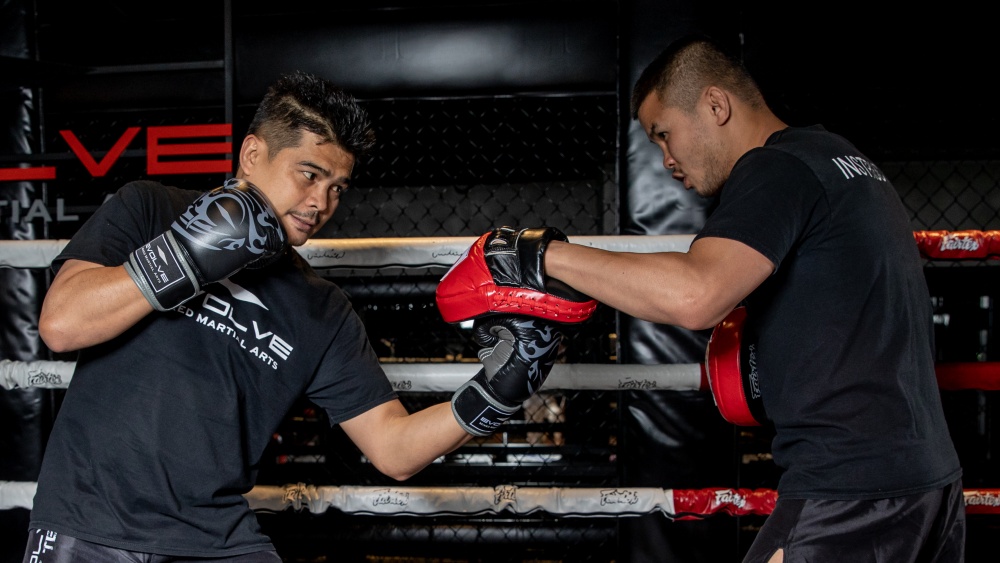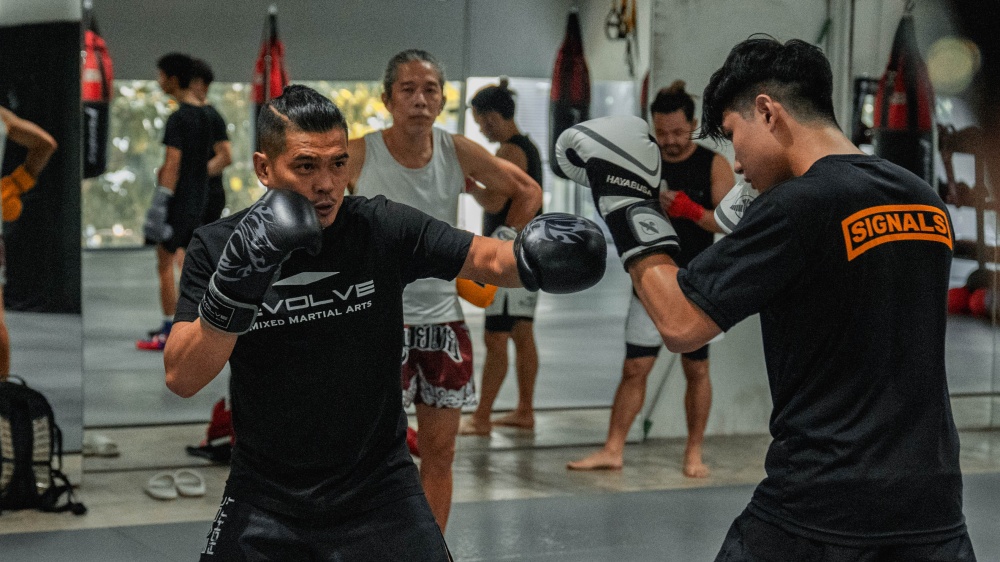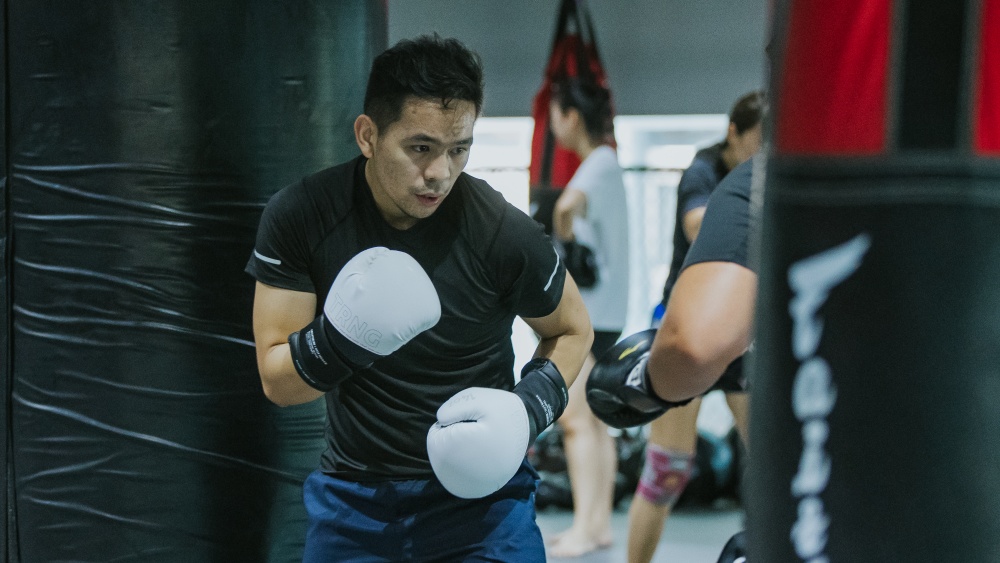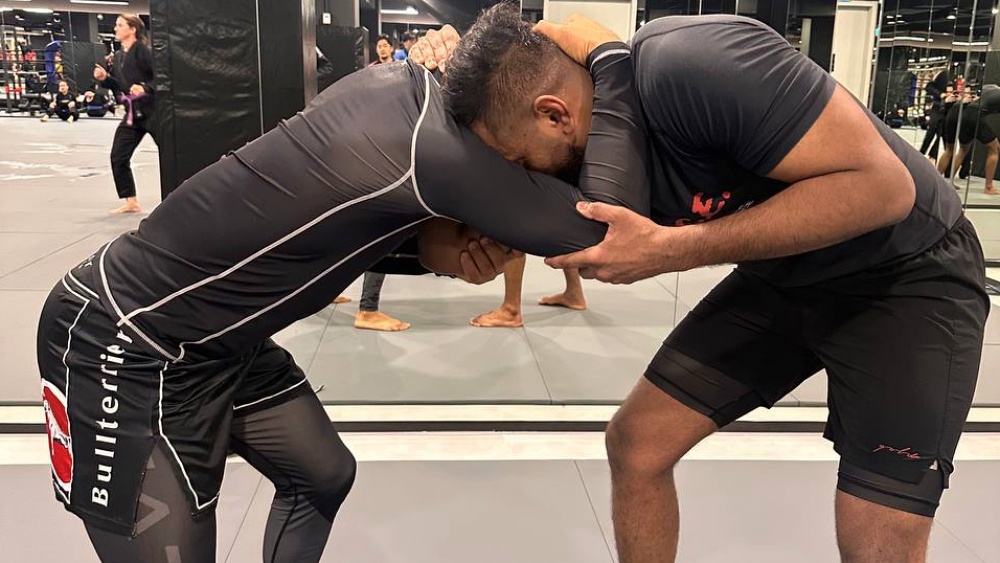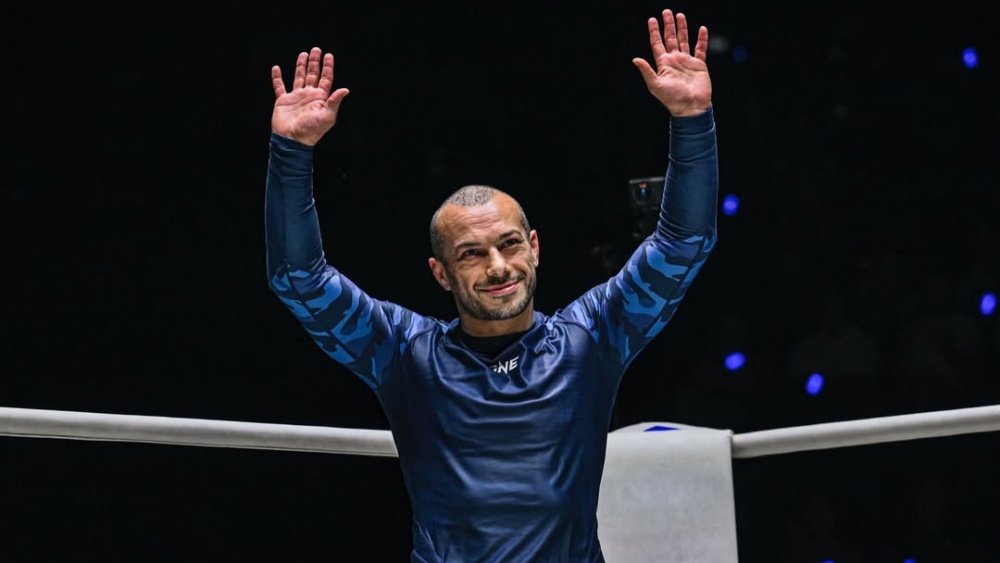Shadowboxing is one of the most important training tools you have at your disposal when training in martial arts like Boxing, Muay Thai, and Kickboxing. It improves the form of your techniques while increasing your speed and power.
Fighters get the most out of their shadowboxing sessions when they take it seriously and act as if they were fighting an invisible opponent instead of simply throwing out random techniques. You can also increase the intensity of your shadowboxing sessions by performing them underwater.
The density of water makes any motion you make underwater more challenging since you constantly have to fight against the resistance of the water. For example, it’s impossible to run across the sides of a pool as fast as you would on land when most of your body is underwater. Regardless of how hard you try, your movements will use up more energy while being significantly slower than they would be on land.
This makes underwater training an essential part of training any striking-based martial art. It allows you to practice all of your techniques while dealing with constant resistance. As a result, your muscle endurance, speed, and explosive power increase.
Benefits Of Underwater Shadowboxing
Some of the benefits you get from performing your shadowboxing sessions underwater include:
1) Increased Speed
Very few training tools allow you to perform striking movements while giving you resistance the entire time like underwater training. Underwater shadowboxing provides resistance against your entire body, which helps to build your explosive fast-twitch muscles. This will eventually make your punches, kicks, and footwork a lot faster.
Try to keep everything below your neck submerged in water to maximize your speed gains. You want to feel the resistance of the water as you throw strikes and bring your limbs back to the starting position.
2) Improved Footwork
The resistance caused by water makes movement in it a lot more challenging than if you were on land. That makes a swimming pool one of the best locations to practice your footwork. Make sure you use your feet after throwing a combination to get your legs working while dealing with resistance when shadowboxing underwater. Your movements will become a lot more fluid when you’re in open air.
3) Improved Power
Underwater shadowboxing also helps to increase the power of your strikes since it forces you to deal with resistance while performing your movements. This helps to increase the explosive capabilities of your muscles while increasing the speed of your strikes. The faster a strike moves at the time it makes an impact, the more power it delivers.
4) Low-Impact Training
Any exercises performed underwater have a lower impact on your joints than performing them on dry land. This makes underwater training a great option for rest and low-intensity days. Training underwater allows you to work on your fighting skills without putting significant stress on your body.
The constant resistance the water provides makes it an excellent way to train explosiveness.
5) Improved Technique
Any type of shadowboxing helps to increase your striking technique, and many boxing experts would agree that underwater training is more effective at doing that since it slows all your movements down. Fighters often develop poor form due to trying to throw strikes as fast as possible, but underwater training forces them to slow down, which makes any flaws in their technique more obvious.
Getting The Most Out Of Underwater Shadowboxing
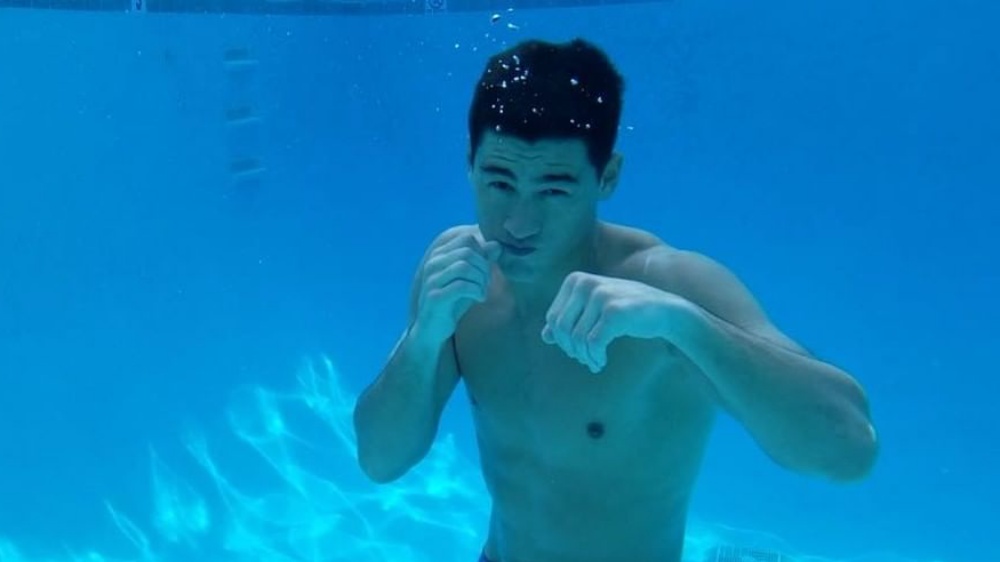
Many athletes already make underwater training part of their strength and conditioning routines. Exercise programs like hydro fitness and aquatics are also becoming increasingly popular as a growing number of people learn about the benefits of water training.
Elderly people, in particular, should consider starting some sort of water training program since other common fitness activities like running or cycling might be too stressful for their joints. Water training doesn’t put significant stress on muscles and joints, allowing for a shorter recovery process. It is often used to rehabilitate injuries since its impact on the body is so low.
Performing exercises underwater serves two main purposes: providing support and resistance. The water’s density makes any movement you make a lot more difficult than it would be in open air. You end up using twice the effort to make the same movement in the water.
Water resistance is constant, making it an excellent way to develop explosive power. The water’s resistance remains constant regardless of which phase of a movement you’re in, forcing your muscles to do more work.
If you’re new to underwater shadowboxing, start by training in ankle-deep water. This will help to improve your footwork without feeling overwhelmed. Once your comfort levels increase, move on to waist-deep water. This will help your footwork even more since your legs are now submerged.
Once that becomes easy, move on to neck-deep water. When that starts getting easy, push yourself more by completely submerging yourself in deep water and shadowboxing for as long as you can hold your breath. This brings new challenges since keeping your body underwater becomes a battle. You’ll now have to deal with the water trying to pull you to the surface.
Mix up your open-air shadowboxing sessions with some underwater training, and you’ll notice improvements to your speed and power. Water training works well for rest or low-impact days since the stress put on your body and joints is minimal.
The new skills you develop due to having to fight the water’s resistance as you try to stay balanced while moving and throwing striking techniques, will carry over into open-air training sessions and competitions. Remember that you don’t need to be fully submerged in the water to enjoy the benefits of water training. Start with ankle-deep water, and gradually increase the water’s depth. Shadowboxing in shallow water is better for your footwork, so don’t be too eager to start training in neck-deep water.
Experiment with different depths to find out what works best for you. Don’t restrict your water training to only shadowboxing. Many exercises like jump squats, sprints, and lunges can also be performed while submerged. These exercises provide benefits that carry over into combat sports.
You may also like:
Training & Harnessing The Power Of Your Mind For Combat Sports
